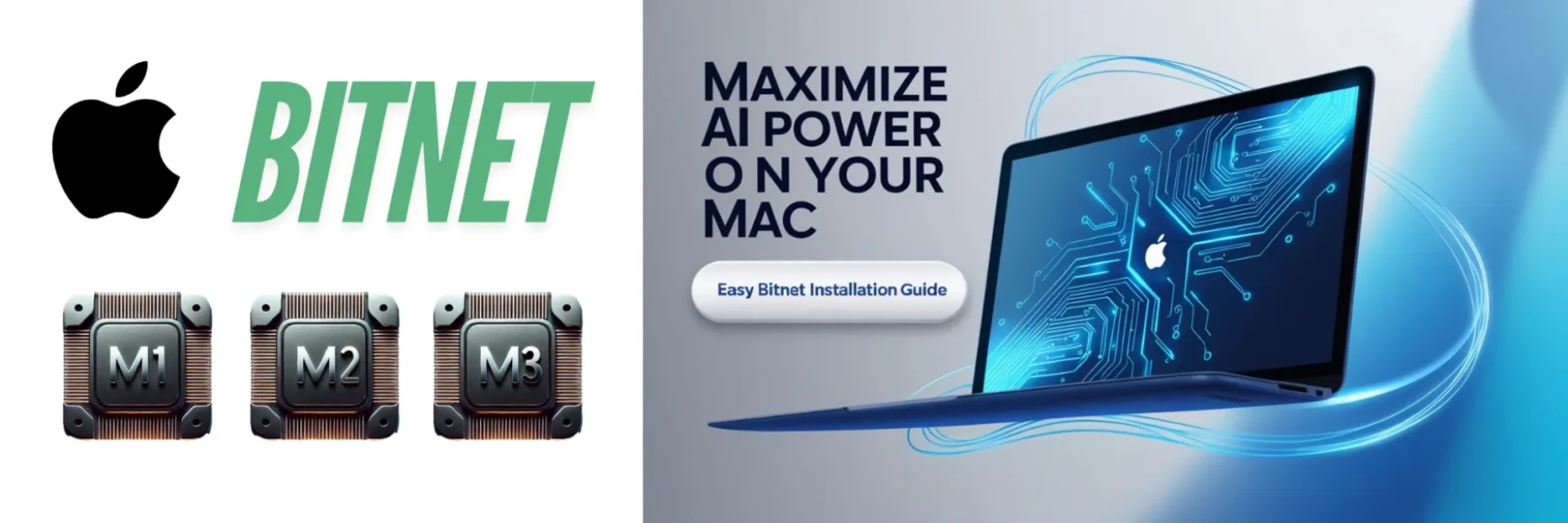BitNet is a powerful tool for running super-efficient AI models on your Mac. Designed to work with Apple Silicon (M1, M2, and M3), BitNet allows you to deploy advanced large language models using 1-bit quantization, making them faster and more energy-efficient. This guide provides a quick installation process and covers its key advantages, disadvantages, and FAQs.
Step 1: Install Homebrew (if not already installed)
Homebrew is a package manager for macOS that simplifies the installation of software. If you don’t have it installed, check out this quick setup guide for Homebrew on Mac M1, M2, and M3.
Step 2: Install Dependencies
- Update your package list:
brew update- Install the required packages:
brew install cmake clang git- Install Python using Homebrew:
brew install python- Verify Python installation:
python3 --version- Install Conda (recommended):
Conda is recommended for managing environments and dependencies efficiently. If you don’t have Conda installed, follow this step-by-step guide for Conda installation on Apple Silicon Macs.
Step 3: Clone the BitNet Repository
- Navigate to the directory where you want to clone the repository:
cd ~/Documents- Clone the BitNet repository:
git clone --recursive https://github.com/microsoft/BitNet.git
cd BitNetStep 4: Create a Conda Environment
- Create a new environment for BitNet:
conda create -n bitnet-cpp python=3.9- Activate the environment:
conda activate bitnet-cppStep 5: Install Python Dependencies
Run the following command to install the necessary Python packages:
pip install -r requirements.txtStep 6: Build BitNet from Source
Download the model from Hugging Face and set up the environment:
python setup_env.py --hf-repo HF1BitLLM/Llama3-8B-1.58-100B-tokens -q i2_sAlternatively, manually download the model and specify the local path:
huggingface-cli download HF1BitLLM/Llama3-8B-1.58-100B-tokens --local-dir models/Llama3-8B-1.58-100B-tokens python setup_env.py -md models/Llama3-8B-1.58-100B-tokens -q i2_s
Note: The models compatible with BitNet can be found on Hugging Face at HF1BitLLM. This repository provides pre-quantized 1-bit models specifically designed for use with BitNet. Download models directly from this repository for optimal performance.
Step 7: Run Inference
To test if everything is working, run a simple inference command:
python run_inference.py -m models/Llama3-8B-1.58-100B-tokens/ggml-model-i2_s.gguf -p "Alice picked up the apple and walked to the park. Bob stayed at home reading a book. Later, Alice returned with the apple. Where is the apple?\nAnswer:" -n 5 -temp 0If successful, BitNet should output:
Alice picked up the apple and walked to the park. Bob stayed at home reading a book. Later, Alice returned with the apple. Where is the apple? Answer: The apple is with Alice.
Advantages of BitNet
- Efficiency: Optimized for ARM CPUs, providing speed-ups and significant energy savings on Apple Silicon.
- Low Resource Usage: Runs large models (e.g., 100 billion parameters) efficiently on local devices without the need for high-end GPUs.
- Open-Source: Allows developers to customize and optimize for specific use cases.
- Scalability: Capable of running powerful models that would traditionally require much more computational power.
Disadvantages of BitNet
- Limited Model Support: Only supports 1-bit quantized models. Existing models must be converted to this format.
- Hardware Compatibility: Although optimized for ARM CPUs, GPU support is still in development, limiting hardware acceleration options.
- Complex Installation: Requires familiarity with tools like Conda, Clang, and CMake, which may not be user-friendly for beginners.
Frequently Asked Questions (FAQ)
Q. What does 1-bit mean in BitNet?
The term “1-bit” refers to the quantization technique used to compress the model weights into a very compact format (1.58 bits per weight). This allows BitNet to run large models efficiently with minimal loss in accuracy.
Q. Can I run any model with BitNet?
No, BitNet only supports 1-bit quantized models. You need to use or convert models compatible with its framework.
Q. Is BitNet compatible with GPUs on Mac?
Currently, BitNet only supports CPU inference. GPU and NPU support are planned for future releases.
Q. Do I need a high-end device to run BitNet?
No, BitNet is optimized for efficiency and can run on Apple Silicon (M1, M2, M3) without needing high-end GPUs.
Q. Why do I need to use Conda?
Conda provides an isolated environment that helps manage dependencies and compatibility issues, ensuring BitNet runs smoothly.
Q. How do I update BitNet once installed?
Navigate to the BitNet directory and run:
git pullRebuild the project using the setup command.
Important Points
- Always activate the Conda environment before running any BitNet commands (
conda activate bitnet-cpp). - For macOS users, ensure all installations (e.g., Homebrew, Conda) are properly added to your PATH.
- BitNet is still in development, and some features (e.g., GPU support) may be added in future updates.
- Follow the repository updates closely to stay informed about new releases and improvements.
By following these steps, you’ll have BitNet up and running on your Mac, unlocking the power of 1-bit LLMs efficiently!
